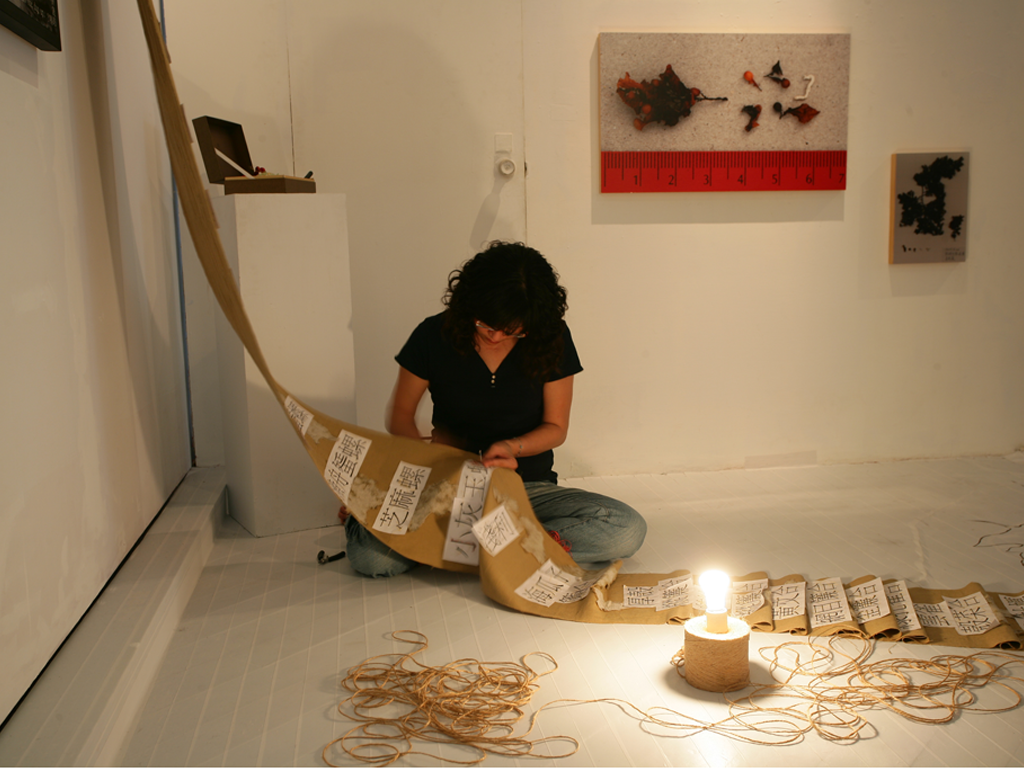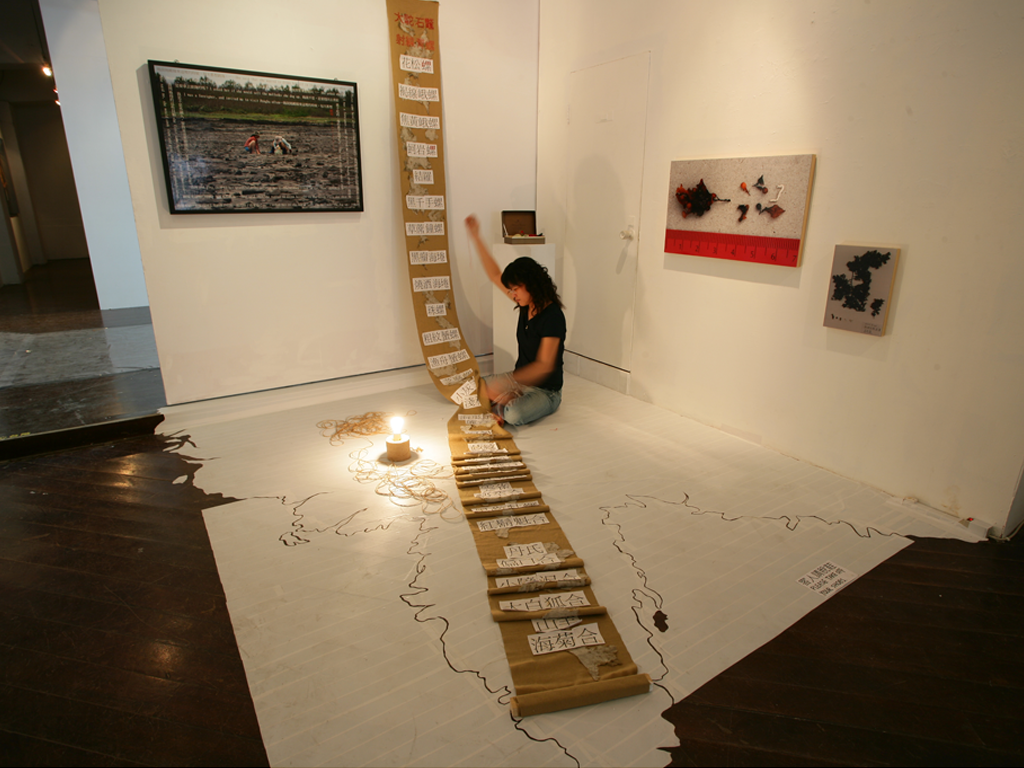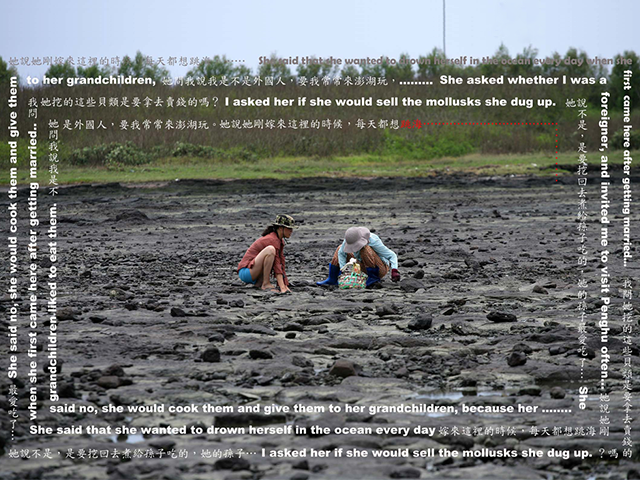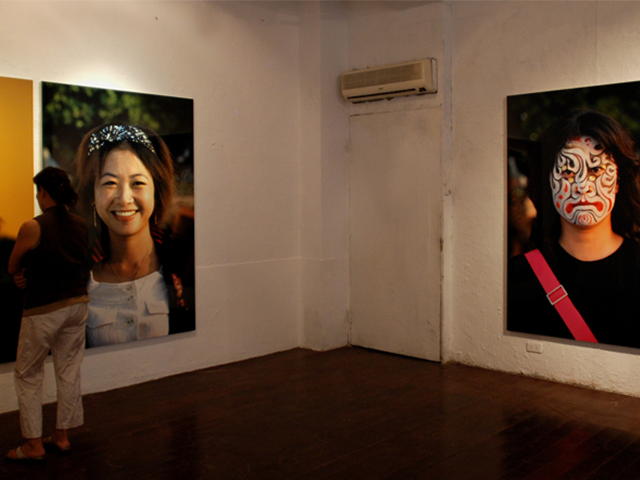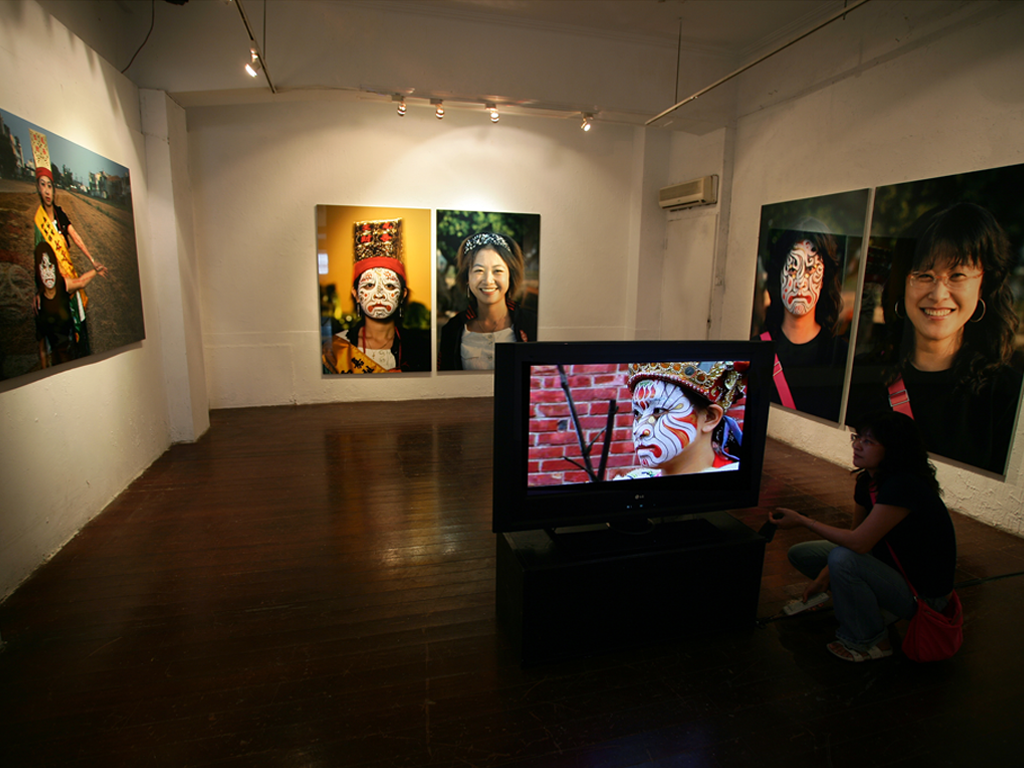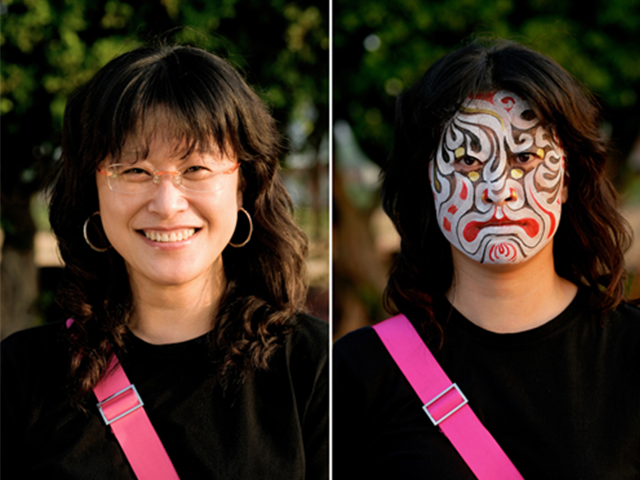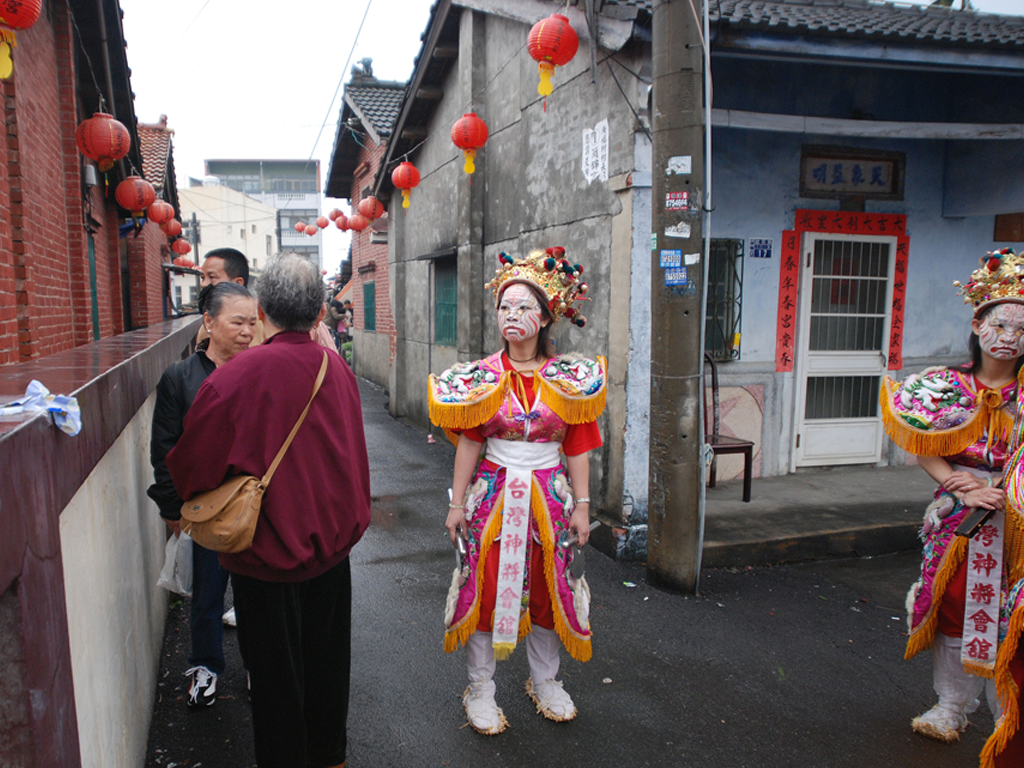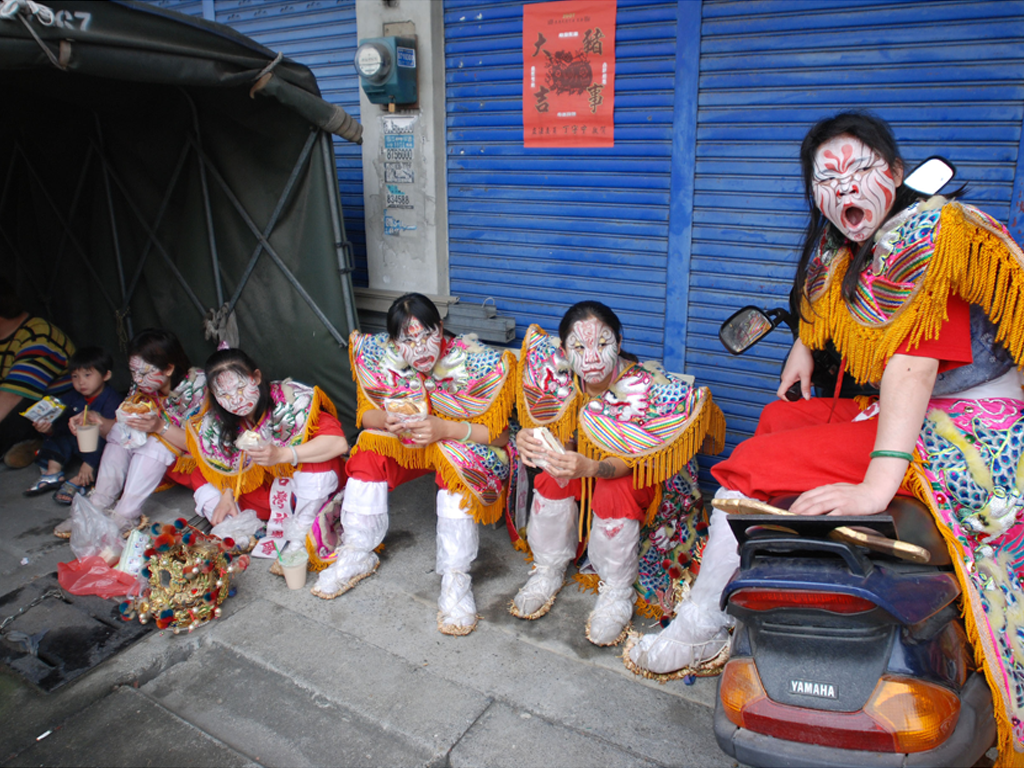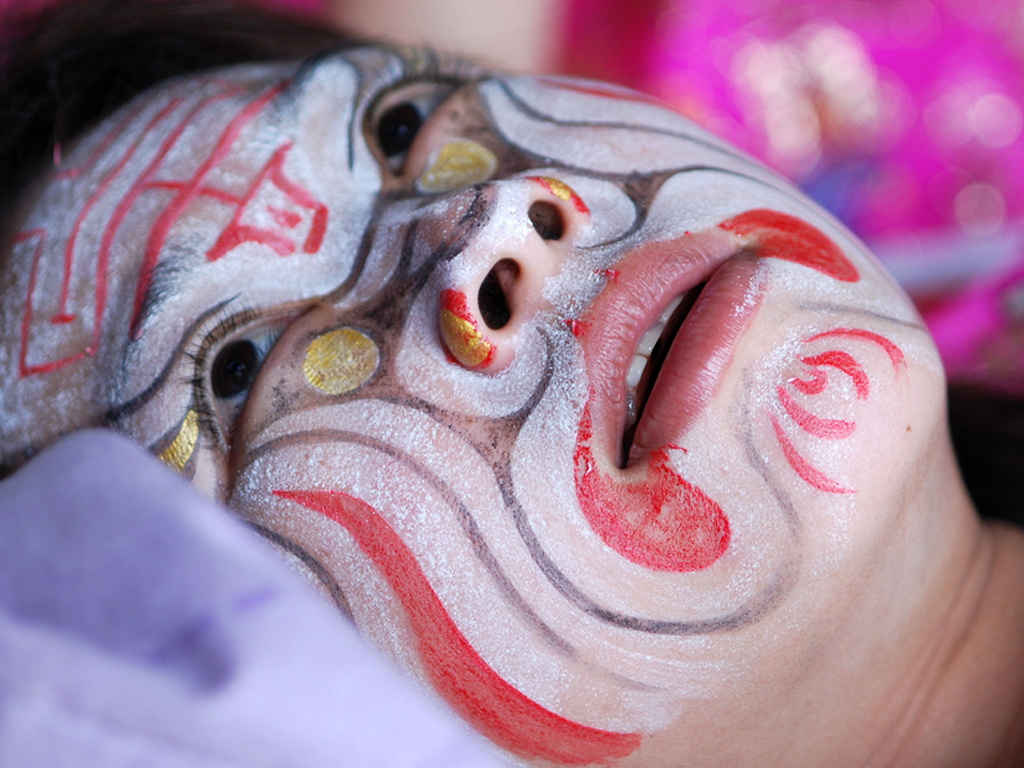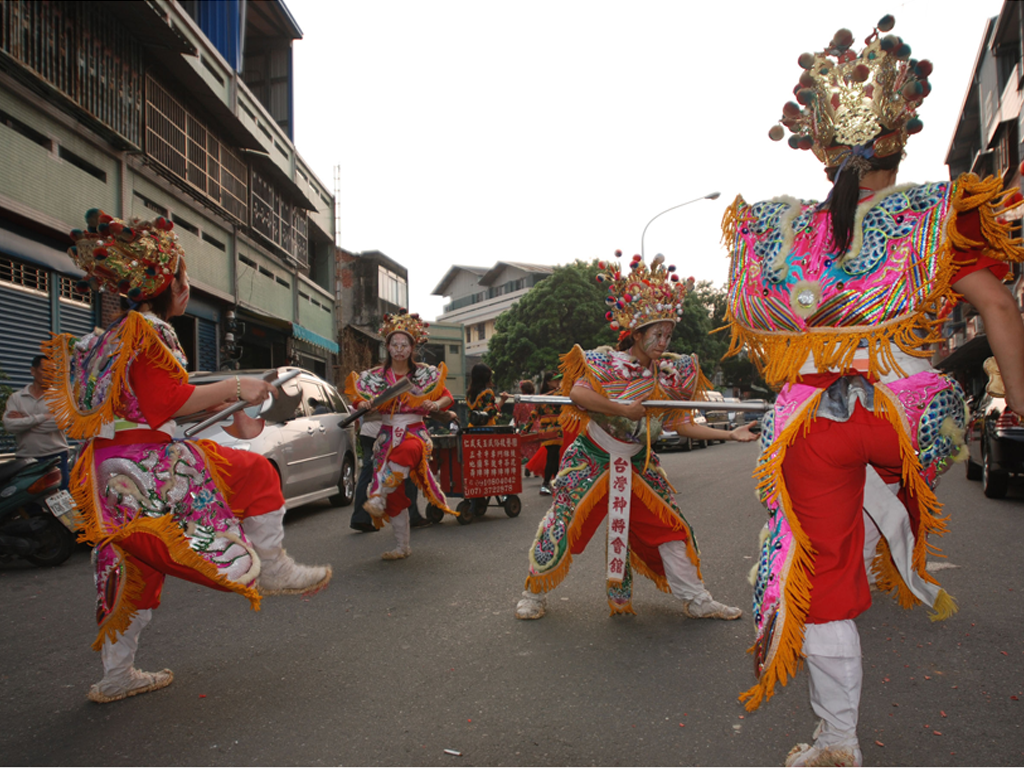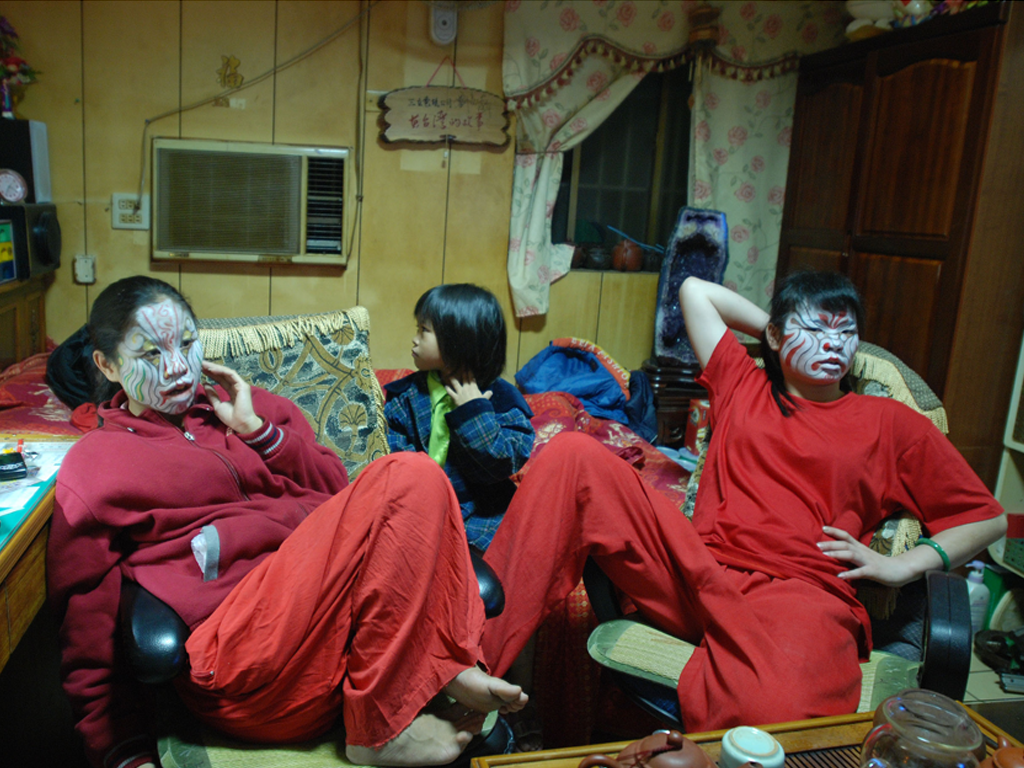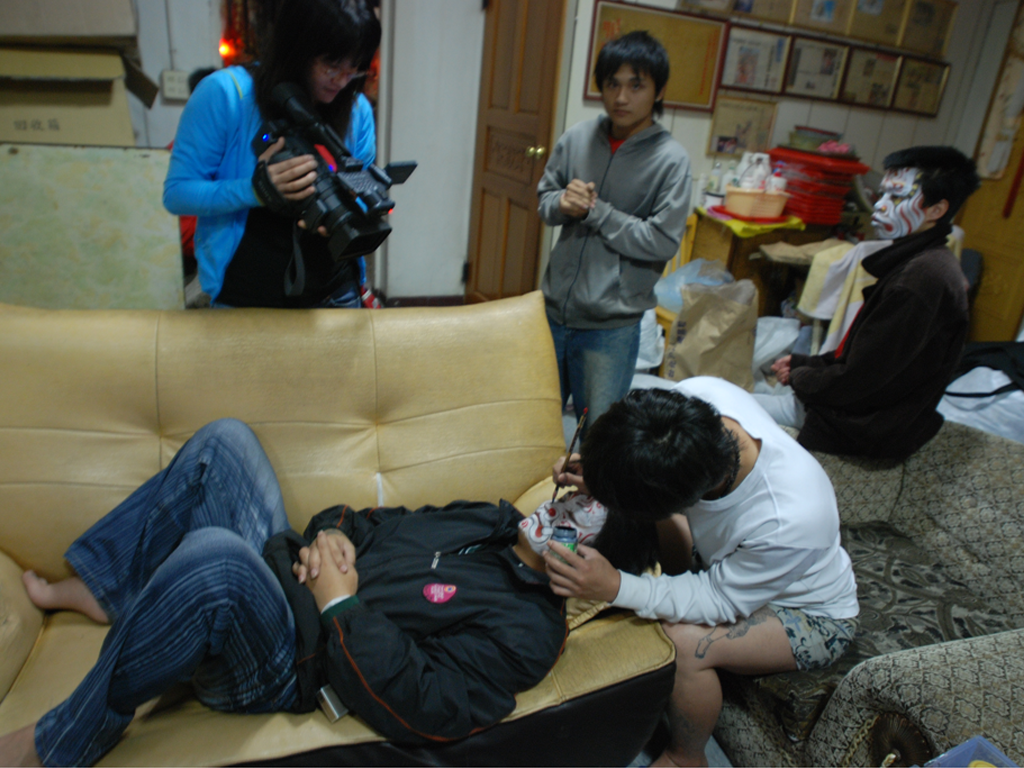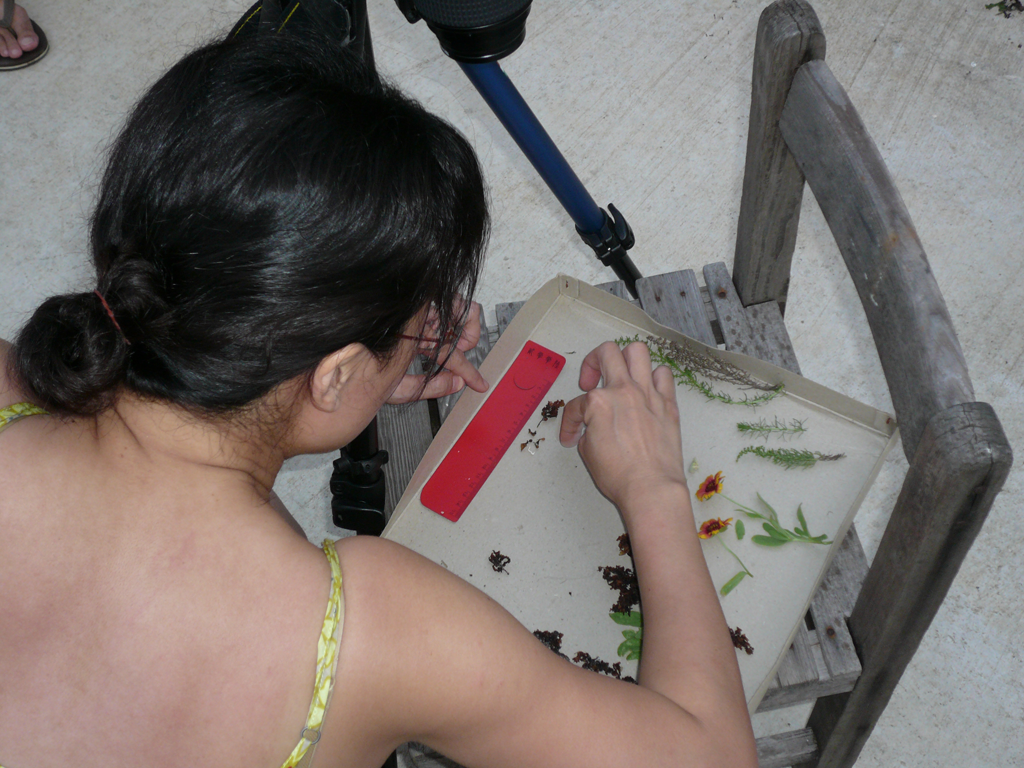Love Mapping
2007 照片與影像裝置(影片《阮玉明心與她台灣家人的一天》,片長37分56秒、HDV 16:9格式)、複合媒材 大小依場地而定
Photos and video installation (video “One Day of Juan-Yu Ming-Hsin and her Taiwanese Family”, 37mins 56sec, HDV 16:9 format), mixed media, depends on the place of exhibition
Love Mapping 系列作品,反映我個人這幾年遊蕩在異國的旅程中與面對全球化經濟的現實之下,一種重尋自己土地上原本就存在的在地價值的過程,這個過程與海島型國家的婦女生活經驗特別有關。在這塊鹹鹹的土地上,我與在地的婦女一起工作與生活,目賭了台灣當代生活中的婚姻、宗教、與區域性經濟活動的種種日常,在作品中我試圖接合了環境生態的思維,以帶有研究手法的假說與道聽塗說的證據,來呈現撮合人文生態的女性地理寓言。
這次作品呈現台灣的三處與海生活有關的地方,以及她們的故事。一位是台灣島西側的澎湖群島中的一處五德潮間帶上,年輕時代挖貝類維生的一位老婦女;兩位從越南來的表姐妹,嫁到台灣一處靠海的台南縣北門鄉;以及一位也是越南嫁來彰化和美鎮的一位婦女,正與新家庭的廟會陣頭家族,跳著台灣道教祭祀中八家將的角色。她們像極了南島語族區域中的海飄植物,掉落的果實或是種子飄在海上,順著海潮,發芽在另一片土地上。
Love Mapping-澎湖五德潮間帶
在澎湖五德的潮間帶上,長久已來耐鹽植物和貝類的繁衍、居民在其上的經濟活動與日常生活,是潮間帶中群聚生態的重要生物繁衍機制。
在天氣好的時候當地的婦人拿著扁鍬,在潮間帶上挖著許多種類的貝類,這種耗工但低收入的經濟活動,長期的供養著當地人們的蛋白質和微薄財務需求,而婦人們對於生活與命運的口述,更是一種不可或缺的社群生命型態的證據。
2007年的8月我們在五德濱海做植物調查時,巧遇了照片上的婦人,第一次見面她就向我述說了許多她的故事,而朋友林柏樑拍下了我們的相遇。我將調查出來的五德潮間常見的貝類中文學名,用手工縫在貼有流蘇菜的布條上面,我以另一種模式的身體勞動,去體會婦人重複性工作時的身體經驗。我許下了承諾,當我完成之時,便會回到當地邀集她和她的家人,在五德潮間帶上拍下一張合照。
耐鹽的植物們觀看著這些,以陳靜的變異持續著它們的繁衍,而在鹽沙中的貝類則日久月長的與其他物種共生,繼續著它們的生命。
※ 流蘇菜:此次創作的流蘇菜是於2006年在台南的淺坪魚溫所取得,它是養殖鹹水虱目魚時的重要食物,放掉水的虱目魚漁塭正在曬著太陽消毒,而乾燥的流蘇菜就貼在魚塭底部的地表上。
攝影協力:林柏樑
五德潮間帶生物調查協力:林圓庭、商累愛、盧建銘
Love Mapping-彰化和美
跟著這個廟會家庭已經一年多了,那時是因為要研究台灣第一個女子八家將團,才認識了遠從越南嫁來台灣的阮玉明心。約十年前因為媽祖托夢給她的公公,希望他從原來的廟陣裡組一個女子八將團,才敢違反原有以男性成員為主的八家將團傳統。而在台灣道教的八家將扮演著有如人間的警檢角色,在主神遶境出巡之時,幫忙緝拿妖怪,而角色的分配大抵模仿清代地方的巡捕審堂。
而阮玉明心就是嫁到全部家人以廟會演出維生的台灣家庭,她除了平常在工廠工作之外,有廟會活動時一樣和她的台灣妯娌們,跳著和自己原有文化信仰截然不同的步子。這一年來,我和他們一起過著跑透台灣的廟會遶境活動,有時從半夜零點畫花臉開始,二十多個大人小孩坐在大卡車裡,從一個廟到另一個廟,從一個鄉鎮到另一個鄉鎮,串聯出一個以宗教活動為主要經濟來源的家庭生活。
阮玉明心為台灣的眾生的平安,畫上了八家將的臉譜、穿上了衣服、拿起了刑具、跳著降魔的陣法,當然主要還是為了日常所需的收入。聽到她希望我為她在越南18歲的妹妹,找一位臺灣丈夫時,興起了我們的一個約定,我和阮玉明心在手臂上用畫臉的顏料寫下誓言,希望有一天一起回到她的家鄉,也就是距離西貢兩個小時遠的頭頓(Vung Tau),看看她念念不忘的家人。
特別感謝:謝武雄 (彰化和美女子八家將團長)
照片表演:阮玉明心、阮玉明心的女兒、許淑真
聲音演唱:黃雪梅、李帶好(居住在台灣北門的越南籍配偶)
臉譜繪製:謝國洋
攝 影:林柏樑
裝置、錄影、錄音、剪接、導演:許淑真
The work "Love Mapping" series reflects the process of rediscovering for those local values that originally existed in my homeland after wandering in foreign countries for several years and facing the economic reality of globalization; this process has a special connection with the life experiences of women from an island country. In this salty land, I worked and lived together with local women, and I witnessed marriage, religion, regional economic activities, and all kinds of everyday matters in contemporary Taiwan. In this work I attempt to connect with environmental thinking, and use research hypotheses and gossip as evidence to piece together a female geographical fable combining culture and ecology.
This work presents three places in Taiwan where life is connected to the sea, and tells the story of women who live in these places. One of them is an old woman who lives near the Wuteh intertidal zone on one of the Penghu islands; as a young girl she dug shellfish to make money for her family. There are also two cousins from Vietnam; one married a man living near the sea in Beimen Township in Tainan County, and the other married a man in Hemei in Changhua County. The latter woman plays the role of one of the Eight Household Generals in Daoist-inspired temple processions with her new family. These women are like wind-blown coastal plants living in the Austronesian language region; their fruit or seeds drift with the currents and sprout in some other land.
Love Mapping-- Penghu's Wuteh Intertidal Zone
In the Penghu's Wuteh Intertidal Zone, the long-term thriving growth of salt-tolerant plants and shellfish, and residents' economic activities and everyday lives, are important biological production mechanisms for the intertidal zone's ecology.
The local women use shovels to dig up many kinds of mollusks in the intertidal zone when the weather is good. This type of laborious but low-income economic activity has long supplemented the local people's protein intake and met their minimum financial needs. The women's oral accounts of their lives and fates provide indispensable evidence of the community's way of life.
When we conducted a botanical survey of the coast at Wuteh in August 2007, I had the good fortune to meet a woman in the photo. She told me many of her stories the first time we met, and my friend Lin Borliang photographed our meeting. I hand-stitched the Chinese scientific names of the most common mollusks living in the Wuteh intertidal zone on a cloth strip with the widgeongrass (Ruppia maritima L.). I used another mode of physical labor to experience the woman's repeated physical perceptions when she was working. I made the promise that, after I completed this project, I would go back to Penghu and have my photograph taken with her and her family in Wuteh intertidal zone.
The salt-tolerant plants see this and continue their growth through quiet change. And the mollusks that live in the briny sand and been coexisting with other species for ages continue their lives.
*Widgeongrass (Ruppia maritima L.): The widgeongrass used in this project was gathered in 2006 at the Chienping fish ponds in Tainan County. It is an important food eaten by saltwater milkfish. When dry milkfish ponds are sterilized by exposure to the sunlight, the dry widgeongrass can be found stuck to the bottoms of the ponds.
Photography assistant: Lin Borliang
Biological study assistant on Wuteh intertidal zone by: Lin Yuanting, Shang Leiai, and Lu Jian-Ming.
Love Mapping-- Hemei, Changhua
I followed this temple festival family for more than one year. Because I wanted to research the first female Eight Household Generals troupe in Taiwan, I ended up meeting Juan-Yu Ming-Hsin, who came from Vietnam to marry a Taiwanese husband. Her father-in-law only dared to organize a female Eight Household Generals troupe, and violate the old tradition that only men should play the Eight Household Generals, only after the goddess Matsu granted him permission in a dream. The Eight Household Generals play the role of policemen in Taiwanese Daoism. When a procession is carrying the main deity around the temple district, the generals arrest demonic spirits. The roles of the Eight Household Generals largely parallel the roles of personnel in local police stations during the Qing Dynasty.
Juan-Yu Ming-Hsin married into a family whose members make their living performing at temple festivals. Apart from her everyday work in a factory, she also takes part in temple festival activities with her Taiwanese sisters-in-law, and the cultural environment and beliefs are completely different from those she knew in Vietnam. I attended many temple festival processions and activities with them over the course of this year. They often get up at midnight to paint their faces, and then more than twenty adults and children get on a large truck and drive from one temple to the next, or drive from one town or township to the next. This is the life of a family that depends on religious activities for much of its livelihood.
In order to bring peace to the living beings of Taiwan, Juan-Yu Ming-Hsin paints her face as one of the Eight Household Generals, puts on her costume, takes up her instruments of torture, and dances the "demon-subduing" procession steps. Of course she does this mostly to make some income. She hoped I could find a Taiwanese husband for her 18-year-old sister, and I made a pact with her: We wrote on our arms by painted our faces’s dyes that one day we will go to her hometown together (her home is in Vung Tau, which is about two hours from Saigon) and see her family.
Special thanks for Xie, Wu-Xiong (Chief of Changhua Hemei Women’s Eight Household Generals Group
Photographs Performance: Juan-Yu Ming-Hsin, Juan-Yu Ming-Hsin’s Daughter, Hsu Su-Chen
Audio performance: Huang Xue-Mei, Li Dai-Hao (Vietnamese wives living in Beimen)
Makeup in Eight Household General: Xie, Guo-Yang
Photography: Lin Borliang
Installed, video photography, edited, vocal recording, directed: by Hsu Su-Chen
Photography: Lin Borliang
參展紀錄 Recording of display
2007 許淑真「Love Mapping」個展,新濱碼頭藝術空間,高雄,台灣
2014「許淑真紀念展」,高雄市立美術館,高雄,台灣
註:<Love Mapping﹣彰化和美>最終由許淑真定義為一件獨立作品並命名為《Love Mapping》
2007 Hsu Su-Chen solo exhibition" Love Mapping", Sin Pin Pier Art Space, Kaohsiung, Taiwan
2014 Commemorative Exhibition of Hsu Su-chen, Kaohsiung Museum of Fine Arts, Kaohsiung, Taiwan
典藏紀錄 Works in Collections
高雄市立美術館,台灣
Kaohsiung Museum of Fine Arts, Taiwan
